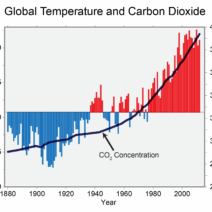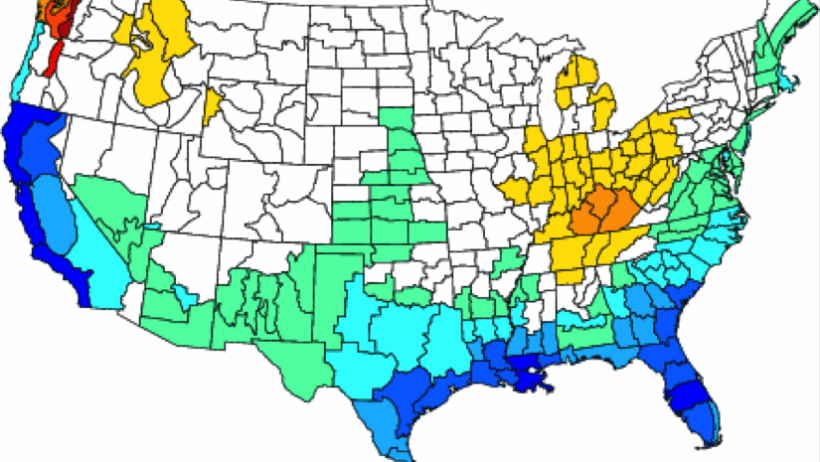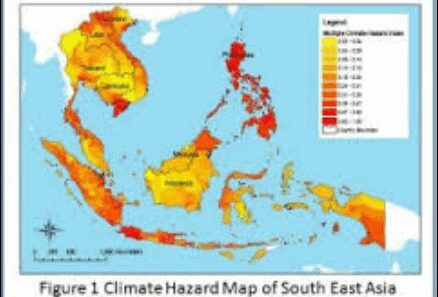When contemplating the intricate tapestry of our planet’s climate, one cannot overlook the capricious nature of oceanic anomalies, particularly the phenomenon known as El Niño. This climatic event, characterized by the anomalous warming of surface waters in the equatorial Pacific Ocean, plays a pivotal role in modulating weather patterns not just in the region, but across the entire globe. But why should we care about these ocean anomalies? Could their erratic warm embrace be the unwelcome harbinger of upheaval in weather patterns that we have come to depend upon? This article seeks to unravel the complexities of El Niño, illuminating its impacts and the concomitant challenges it poses for humanity.
To grasp the intricacies of El Niño, one must first understand its mechanism. The trade winds, which typically blow from east to west across the tropical Pacific, weaken during an El Niño event. This leads to a cascade of effects, including a rise in sea surface temperatures and shifting rainfall patterns. While this may seem innocuous, the consequences are anything but benign. The repercussions ripple outward, influencing atmospheric circulation and subsequently altering weather systems around the world.
One of the most salient impacts of El Niño is its effect on precipitation. Regions that are usually arid may experience excessive rainfall, leading to devastating floods, while areas accustomed to regular downpours may find themselves in the throes of drought. For example, during a strong El Niño, the United States’ West Coast often sees substantial rainfall, whereas Australia may grapple with intense dry spells. Could it be that shifts in weather patterns, engineered by ocean temperature fluctuations, are sowing the seeds of humanitarian crises?
But the ramifications extend beyond immediate weather phenomena. The ecological implications are dire. Altered ocean temperatures can decimate marine ecosystems, leading to diminished fish stocks and unpredictable changes in biodiversity. Coral reefs, particularly vulnerable to temperature fluctuations, may experience bleaching events, rendering them critically in peril. This cycle of destruction affects not just marine life, but also communities reliant on fishing for sustenance and economic stability. If one were to pose a playful question: how ready are we to fish in a warming sea?
Another significant aspect of El Niño is its role in amplifying extreme weather events. The interplay of warm ocean waters and atmospheric dynamics can siphon energy into storms, transforming ordinary weather systems into ferocious hurricanes or typhoons. The 1997-1998 El Niño, for instance, was associated with a series of catastrophic weather events, ranging from widespread flooding in Peru to unprecedented drought in Indonesia. As we stand at the precipice of climate change, with worsening extreme weather events, the challenge emerges: are societies adequately prepared to mitigate risk and adapt to these shifting realities?
Indeed, the interplay between El Niño and climate change paints a picture fraught with uncertainty. Climate models predict that as global temperatures rise, the frequency and intensity of El Niño events may increase. This creates a compounding effect, as ecosystems and human structures further strain under increasingly disruptive forces. Our understanding of these phenomena will be pivotal in our efforts to adapt to this evolving landscape.
While scientists are delving deeper into the mechanisms of El Niño, there remains a considerable gap in public awareness. Many people lack an understanding of how these ocean anomalies affect their everyday lives. As the effects of climate change become more pronounced, fostering awareness and engagement will be essential. How do we instill a sense of urgency in individuals and communities thus motivating action?
Moreover, the socio-economic implications of El Niño cannot be overlooked. Vulnerable populations, particularly in developing nations, often bear the insurmountable brunt of climate-induced changes. The burden on agricultural systems, healthcare infrastructures, and local economies can be overwhelming. Hence, it becomes clear that addressing the impacts of El Niño requires not just environmental action but a holistic approach that emphasizes social equity and economic resilience.
In light of these complexities, it is crucial to enhance our predictive capabilities. Improved forecasting of El Niño events can empower communities to prepare for and adapt to changing conditions. From agricultural planning and water management strategies to disaster preparedness programs, the potential to mitigate risks is profound. However, granted the intertwined aspects of climate science, policy making, and community engagement, how do we forge the collaborative alliances necessary to forge effective strategies?
The question of our response to El Niño and its broader implications for climate change is pressing. Stakeholders—policymakers, scientists, community leaders, and individuals—must unite in a concerted effort to understand and address the challenges posed by this phenomenon. One area ripe for exploration is the integration of traditional ecological knowledge with contemporary scientific methodologies. Such an amalgamation may pave the way for innovative approaches to climate resilience.
In closing, the phenomenon of El Niño serves as a poignant reminder of the interconnectedness of our planet’s systems. The ocean’s warmth is not an isolated event; it reverberates through the atmosphere and, ultimately, into our lives. As we stand before the challenge of climate change, it becomes imperative to heed these signals and act. The path forward demands collective vigilance and a commitment to fostering a sustainable future in which humanity harmonizes with nature rather than contending against it.








